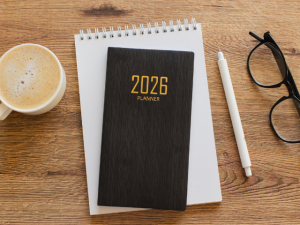Did you know that research is the foundation of User Experience design? It turns out that 88% of users will not return to a site that is dysfunctional and unusable. However, 85% of problems can be solved with this research.
The development of the Internet has caused many companies to move their business to the web. The result is huge competition on the Internet market and the fight for every buyer. Acquiring a new customer is 6 times more expensive than keeping a current one.
User Experience is an important element of a company's development. Usability, functionality, and proper human-product interaction are key to building loyalty between the brand and the customer.

UX History
The beginnings of usability research date back to 1986. They are associated with the publication of "Design of Everything" written by Don Norman. At that time, the author described the effects of a poorly designed system and how they affect use.
UX Research
User Experience Research is the starting point of every design process. It is one of the most important elements, which often becomes a spare tire when the company does not generate the expected profits. Well-conducted research can protect us from many bad decisions, set the direction of development and reduce costs.
Conducting research has many advantages. It allows us to improve the usability of our website, gain knowledge about the target group and, most importantly, gives us access to knowledge about the needs, behaviors and expectations of our potential customers. Research is a treasure trove of information that we need to learn more about our users. It is also used to create attractive and easy-to-use products or services.
Research plan
The first step in conducting User Experience research is to create an appropriate research plan. This is a key element that we should start with. It should be well-constructed, because it will definitely make the research process easier for us and will allow us to organize the specific tasks that we need to perform at each stage.

Research Objective & Research Questions
The goal set should be related to the business needs of the clients. This is the stage when it is worth considering what we expect from the research and what exactly we want to investigate. At this point, we should also think about how we will use the acquired knowledge and what it will serve us for. The research goals should be specified and specific.
Research group
The next element that should be in our research plan is the selection of the appropriate research group, which we will then recruit. At this point, we define and specify the research sample.
Research method
The research method must correspond to our assumptions and goals, and should also be based on rational premises. The purpose of choosing a research method is to obtain answers to the research questions posed.
Data & Analysis
At this stage, we define what data we want to obtain and how it will be analyzed. It is important to specify whether it will be quantitative, qualitative or comparative data.
Research schedule
Deadlines are the most important thing that should be included in our schedule. The time frame depends on many factors. It is worth writing down all the detailed information about our research: recruitment, research period, end time and sending the results to the client.
Budget
When it comes to the budget, it is worth anticipating it. This will allow us to control our activities. We should include: remuneration for respondents, external costs, logistics, and the time of the research team.
Types of UX research
We can conduct user research in several ways. The choice of method depends on the goal.
We distinguish the following research methods:
IDI – Individual in-depth interviews. This is a direct conversation between the researcher and the subject. Interviews are conducted according to a prepared scenario. Often used as a supplement to other research methods. They allow for deeper knowledge of the phenomenon being studied, better observation of the respondent and reaching the emotional behavior of the individual. This is one of the basic qualitative methods. Thanks to interviews, we can get to know the user's perspective at the initial stage of the project.

Eye tracking – The aim of this study is to observe eye movements and analyze individual interface elements. This is a very detailed study, thanks to which we can see what the user pays the most attention to and which elements they ignore.
Usability Testing – The study involves performing tasks that are based on popular behavioral patterns. The participant performs the assigned tasks under the supervision of the instructor and comments on their behavior and movements on an ongoing basis. Examples of tasks include the process of purchasing in an online store or finding specific information on a website.
Card Sorting – Useful research when we want to plan the information architecture on our website or in a mobile application. It consists of organizing elements into specific groups. We distinguish three methods of sorting cards:
- Card sorting open – participants independently group the elements and come up with their own names for the groups they create.
- Card sorting closed – participants assign specific elements to pre-defined categories.
- Free list – participants independently create groups, names, elements.

Focus Groups – Scenario-based research, led by a moderator who stimulates discussion among participants. The method allows for the exploration of different points of view.
Prototyping – Effective visual research, which consists of sketching mockups of our screens. The purpose of the sketches is to show them to people to get their opinion. The evaluation is related to all design options. The method allows for easy and quick identification of errors.
Heuristic Analysis – The method aims to find problems resulting from the usability of a given product. The study is conducted by an expert. It involves the analysis of navigation and screens. One of the most popular lists for heuristic analysis is Nielsen's 10 heuristics.
Analysis of session recordings – The study helps to check how the user navigates the website, helps to notice errors on the website and find elements that users have problems with most often.
Summary
Statistics don't lie. Users will leave your site if it doesn't load in under three seconds. User Experience is the future of your business and position on the market. If your website is not functional, you should expect to lose potential customers. People are looking for easy solutions.
The belief that if we do not see the problem ourselves, it does not exist is wrong. Such thinking can result in many losses for the company.
How is AI changing B2B marketing and why is it worth implementing it with a digital agency?
Until recently, artificial intelligence was a futuristic term known primarily from science fiction books and films. Today, it's already having an impact…
Technological foundation in the medical industry: website as an effective funnel
In the world of B2B marketing – especially in the demanding healthcare industry – purchasing decisions are rarely impulsive; they are often long and…
B2B Marketing Strategy for 2026
2026 will bring a further shift toward relationship-based marketing, experiential marketing, and consistent communication. For B2B companies competing…
- Written by: Kinga King
- Posted on: 16 Feb 2022
- Tags: tests, design, UX





